- What is Psychology? Top 4 Things to Know About Psychology
- 10 most dangerous poisonous mushrooms in the world you should know
- Top 11 most charming and beautiful flowers blooming at night in the world
What is ocean?
The ocean is a huge body of salt water. It forms the bulk of our Earth's hydrosphere.
Previously, the ocean on Earth was divided into 4, hence the saying that there are five continents and four seas. However, in reality, this saying is no longer accurate. The number of recognized continents as well as oceans has become 7 continents and 5 seas.
Specifically, the total area of Earth's oceans is about 361,000,000km² (that's ~71% of the Earth's surface). The total volume of the ocean occupies about 1,370,000,000km³ and the average depth is 3,790m. Our hydrosphere (which includes the oceans along with all freshwater in groundwater, lakes, rivers, snow, ice, and atmosphere) accounts for about 0.023% of Earth's total mass.
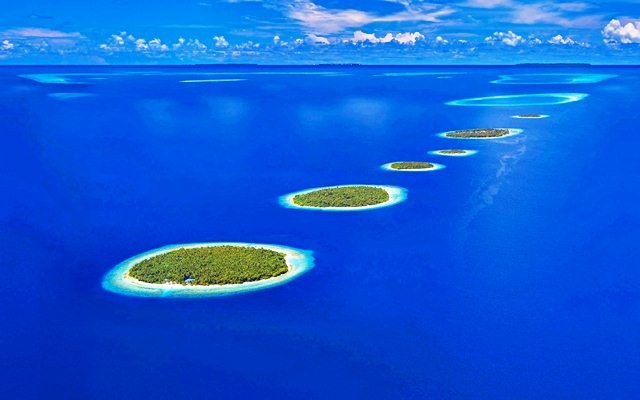
The oceans are extremely important for life in our world. Life began in the ocean, and today, the ocean is "home" to more than 230,000 species of marine life.
The oceans also control the Earth's climate and temperature. They balance heat and are important for generating precipitation.
On average, the world's five oceans have a salinity of about 3.5%. However, areas like the Mediterranean, Atlantic and Bay of Bengal have higher salinity.
How many oceans does the earth have?
The Earth's surface is covered by 70.8% of sea water and is divided into 5 oceans, including the Arctic Ocean, the Atlantic Ocean, the Indian Ocean, the Pacific Ocean and the Southern Ocean.
For a long time, only four oceans were officially recognized. Until the spring of 2000, the International Hydrographic Organization proposed dividing the southern seas into the Southern Ocean, the waters around Antarctica. The boundary of the Southern Ocean is defined as all sea below 60 south latitude, including some places where the sea surface is frozen.
It can be said that the Southern Ocean has long been recognized by scientists, but because there is no international agreement, many countries have not yet recognized it. However, in honor of World Oceans Day, June 8, 2021, the US Geographical Commission officially recognized the Southern Ocean as the 5th ocean in the world.
Surely we Vietnamese are very familiar with the saying that Five continents are four pools, at the present time, this is no longer true. Currently in the world there are 7 continents and 5 oceans.
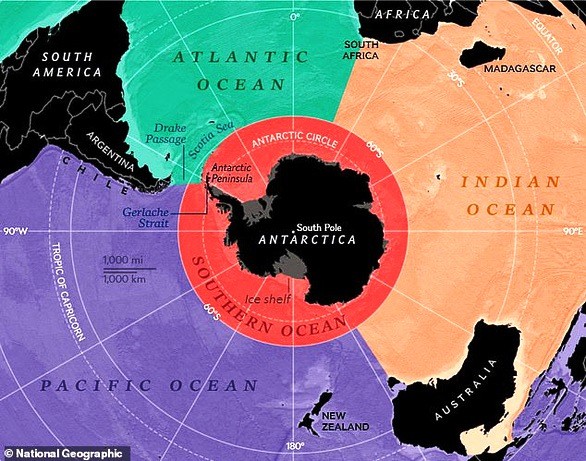
The world's oceans are continuous bodies of water surrounding the Earth, with a total area of 361,132,000 square kilometers, covering 70.8% of the Earth's surface . This water area is divided into 5 main water bodies:
1. The Pacific Ocean is the largest ocean in the world
The Pacific Ocean (168,723,000 km2) is the largest ocean in the world. It extends from the North Pole to the Southern Ocean in the south, bounded by Asia and Australia in the west and the Americas in the east.
It covers about 46% of the Earth's water surface and about a third of the total surface area, making it larger than all of the earth's land area combined.
It extends approximately 7,500 km (9,600 mi) from the Bering Sea in the Arctic to the northern part of the Southern Ocean. The Pacific Ocean reaches its greatest east-west width at about 5°N latitude, where it stretches about 19,800 km (12,300 mi) from Indonesia to the coasts of Colombia and Peru – halfway around the world and more than five times as long as the road. glass of the Moon.
The lowest known point of the Pacific Ocean and the lowest on earth is the Mariana Trench east of the Mariana Islands. Reach a depth of 10,911 meters (35,797 ft) below sea level. The average depth of the Pacific Ocean is 4,188 meters (14,000 ft).
The Pacific Ocean is currently shrinking due to plate tectonics, while the Atlantic Ocean is increasing in size, by about an inch per year (2-3 cm/year).
2. The Atlantic Ocean is the second largest ocean in the world
The Atlantic Ocean (85,133,000 km2) is the second largest ocean in the world. It covers about 22% of the Earth's surface and about 26% of the water surface.
The Atlantic Ocean occupies an S-shaped basin that extends vertically between the Americas to the west, and Europe and Africa to the east. It is connected to the north with the Arctic Ocean, with the Pacific Ocean to the southwest, the Indian Ocean to the southeast and the Southern Ocean to the extreme south.
The width of the Atlantic Ocean varies from 2,848 km (1,770 mi) between Brazil and Sierra Leone to more than 6,400 km (4,000 mi) in the south.
3. Indian Ocean is the third largest ocean in the world
The Indian Ocean (70,560,000 km2) is the third largest ocean in the world, accounting for about 20% of the water on the Earth's surface. It is bounded to the north by the Indian subcontinent; to the west by East Africa; to the east by the Indochina peninsula, the Sunda Islands and Australia; and to the south by the Southern Ocean.
The Indian Ocean is nearly 10,000 km (6,200 mi) wide, including the Red Sea and the Persian Gulf. The volume of this ocean is estimated to be 292,131,000 km3. The island nation in the Indian Ocean is Madagascar, the world's fourth largest island; Reunion Island; Comoros; Seychelles; Maldives and Sri Lanka. The Indonesian archipelago is bordered to the east.
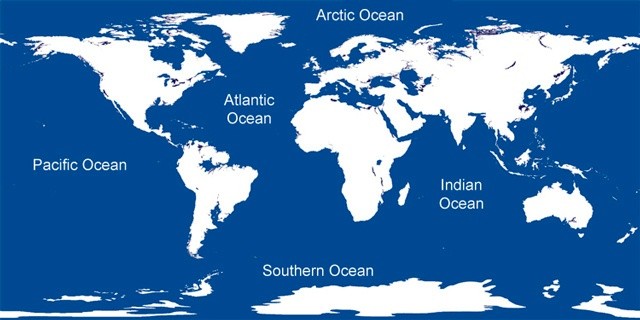
4. Southern Ocean also known as Antarctic Ocean
The Southern Ocean (21,960,000 km2), also known as the Antarctic Ocean, is the fourth largest ocean in the world. It includes the southernmost waters on the planet, from latitude 60° south and below, and surrounds the continent of Antarctica.
Large ice sheets are common in the waters of the Southern Ocean, as are a multitude of icebergs and sea ice of varying depths. Strong winds and big waves in the north. Dominated by the Antarctic Circumpolar Current
Southern Ocean is the only ocean in contact with 3 other oceans and covers an entire continent, without being surrounded by other continents like the other 4 oceans.
This announcement will make a significant change to the education sector in particular and to the science of studying Earth's geography and climate in general. Maps will have to be redrawn, and the ocean education program will also have many changes.
5. The Arctic Ocean is the smallest and shallowest ocean
The Arctic Ocean (15,558,000 km2) is the smallest and shallowest of the world's five major oceans. The coastline is estimated to be 45,390 km long. Surrounded by land masses in Europe, North America, Greenland and several islands. It is partially covered by sea ice throughout the year and almost completely during the winter months.
The Arctic Ocean is mostly frozen from October to June. Before the advent of modern icebreakers, ships sailing out into the Arctic Ocean ran the risk of being trapped or crushed by sea ice.
It includes Baffin Bay, Barents Sea, Beauford Sea, Chukchi Sea, East Siberian Sea, Greenland Sea, Hudson Bay, Kara Sea, Laptev Sea, White Sea and other tributaries. It is connected to the Pacific Ocean by the Bering Strait and the Atlantic Ocean through the Greenland Sea and the Labrador Sea.
Some additional information about the Oceans
Maximum depth on the seabed:
- Mariana Trench, Pacific Ocean 35,827 ft
- Puerto Rico Trench, Atlantic Ocean 30,246 ft
- Java Trench, Indian Ocean 24,460 ft Arctic Basin, Arctic Ocean 18,456 ft
- Southern Ocean, 23,737 ft
97% of the water on Earth is contained in the oceans.
Although there is little research on the origin of our planet's oceans, it is estimated that they formed during the Hadean period and were responsible for the emergence of life on Earth. Together, these five world oceans are responsible for influencing climate and weather patterns on the planet. And is part of the carbon and water cycle that is so important to life on Earth.
The world's oceans have 230,000 known species of marine life, and more could be discovered if humans explored deeper into the ocean floor.

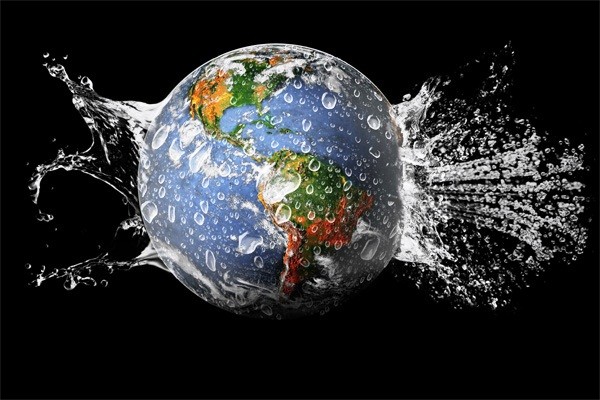




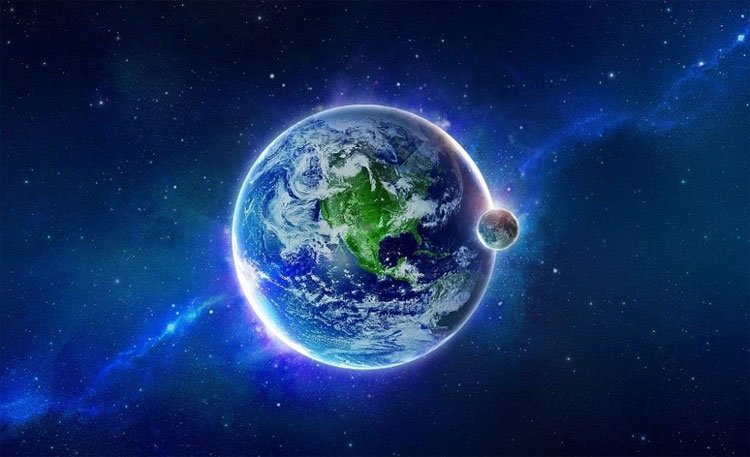

Để lại bình luận
5